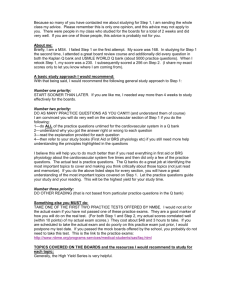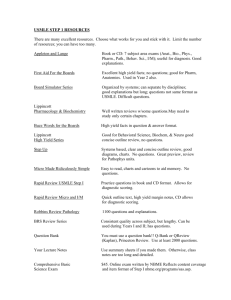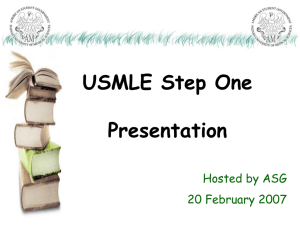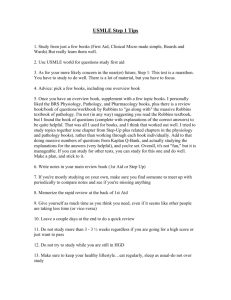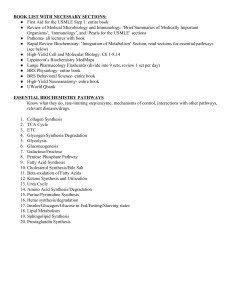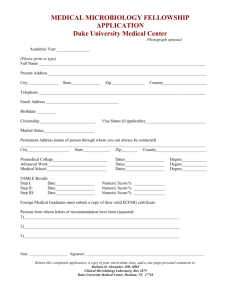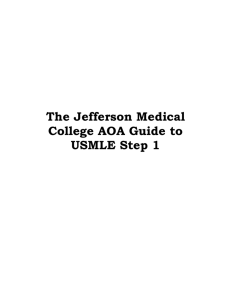Preparing for the USMLE Step 1 TIER I TIER III
advertisement
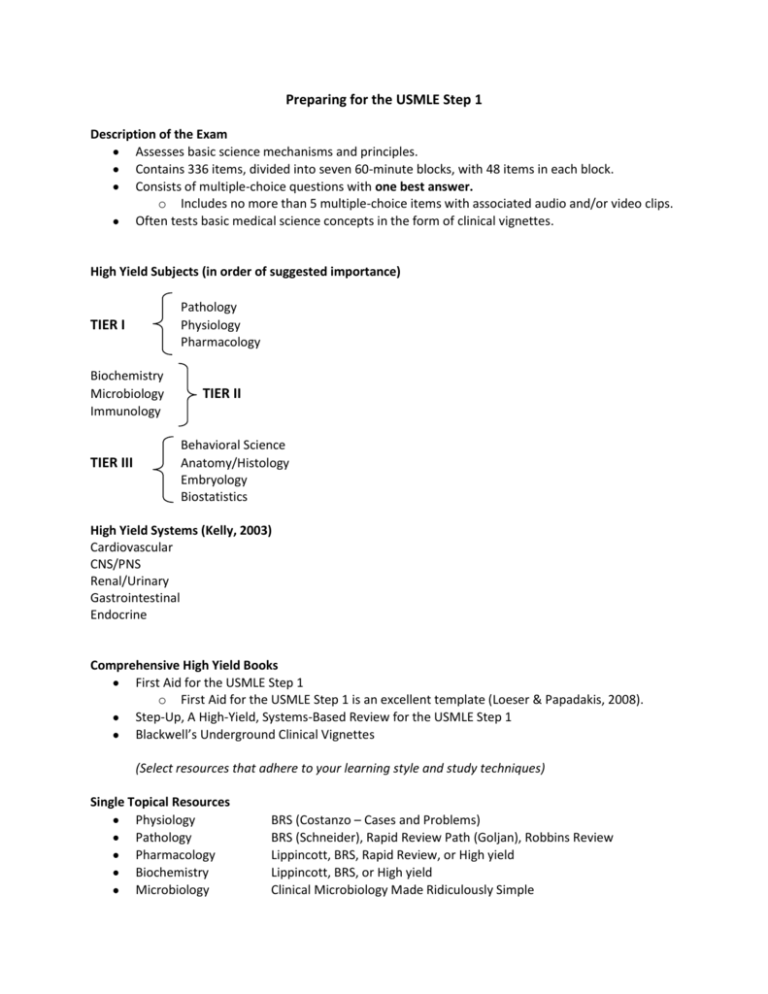
Preparing for the USMLE Step 1 Description of the Exam Assesses basic science mechanisms and principles. Contains 336 items, divided into seven 60-minute blocks, with 48 items in each block. Consists of multiple-choice questions with one best answer. o Includes no more than 5 multiple-choice items with associated audio and/or video clips. Often tests basic medical science concepts in the form of clinical vignettes. High Yield Subjects (in order of suggested importance) Pathology Physiology Pharmacology TIER I Biochemistry Microbiology Immunology TIER III TIER II Behavioral Science Anatomy/Histology Embryology Biostatistics High Yield Systems (Kelly, 2003) Cardiovascular CNS/PNS Renal/Urinary Gastrointestinal Endocrine Comprehensive High Yield Books First Aid for the USMLE Step 1 o First Aid for the USMLE Step 1 is an excellent template (Loeser & Papadakis, 2008). Step-Up, A High-Yield, Systems-Based Review for the USMLE Step 1 Blackwell’s Underground Clinical Vignettes (Select resources that adhere to your learning style and study techniques) Single Topical Resources Physiology Pathology Pharmacology Biochemistry Microbiology BRS (Costanzo – Cases and Problems) BRS (Schneider), Rapid Review Path (Goljan), Robbins Review Lippincott, BRS, Rapid Review, or High yield Lippincott, BRS, or High yield Clinical Microbiology Made Ridiculously Simple Micro & Immunology Behavioral Science Anatomy, Embryology, and Neuroanatomy Lange (Levinson) Review BRS or High yield High yield series (Larson, 2006; Tetreault, 2008; Trietley, 2008) Board Study Plan Suggestions (Spring semester prior to the intense three to six week study period) Read through First Aid for Step 1 in its entirety and set it up for additional review during the intense study period. Study biochemistry or microbiology or pharmacology during the majority of the time or do a combination of two of those content areas. Go through the nine editions of Blackwell’s Underground Clinical Vignettes. (Tetreault, 2008) Creating a Study Schedule Define your goal. Develop a realistic study schedule (3-6 weeks). Choose an approach that works best for you. **Sample schedules are attached** Reducing Stress Your advance preparation will help to decrease test anxiety. Remember, each class you attend is preparing you to take this exam. Organizing and integrating your knowledge will enable you to review the material you already know in an effective and efficient manner.
